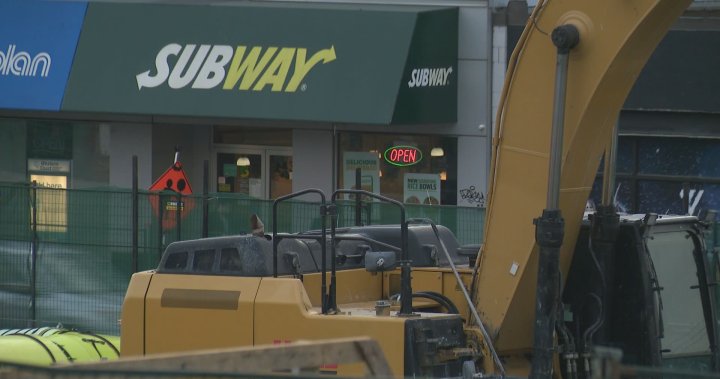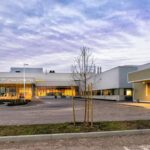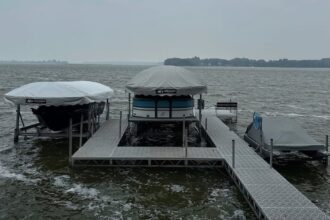The rhythmic pounding of jackhammers and the constant rumble of heavy machinery have become the unwelcome soundtrack for businesses along Vancouver’s Broadway corridor, where the ambitious $2.8 billion subway expansion project has transformed one of the city’s busiest thoroughfares into a sprawling construction zone.
“We’ve lost about 40 percent of our business since construction began,” says Maya Chen, owner of Green Leaf Café, a once-thriving establishment now partially obscured by construction barriers. “Regular customers tell me they avoid the area entirely now because it’s too difficult to navigate.”
The Broadway Subway Project, which will extend the Millennium Line from VCC-Clark Station to Broadway and Arbutus, represents a critical infrastructure investment for Vancouver’s growing transportation needs. However, the five-year construction timeline has created significant challenges for the estimated 350 businesses operating in the corridor.
Daniel Ferguson, Director of the Broadway Business Improvement Association, describes the situation as “economic quicksand” for many small enterprises. “We’re seeing alarming closure rates, particularly among independent retailers who simply don’t have the financial reserves to weather this extended disruption. The loss of parking, reduced foot traffic, and accessibility issues have created a perfect storm.”
City data reveals that commercial vacancy rates along Broadway have increased by 18% since construction began in 2021, with particularly acute impacts between Main Street and Arbutus. A survey conducted by the Broadway Business Association found that 72% of businesses report revenue declines of at least 25%, with restaurants and specialty retailers hardest hit.
“The construction timeline keeps shifting,” explains James Wong, whose family has operated Golden Dragon Restaurant for three decades. “First, we were told the disruption would last six months in our section. It’s been fourteen months now, and we’re still surrounded by barriers. We’ve had to let go of five employees.”
The provincial government and TransLink have implemented a Business Support Program offering limited compensation for severely affected businesses, but many owners describe the assistance as inadequate. The program provides a maximum of $50,000 for businesses demonstrating significant revenue loss directly attributable to construction.
“The support program barely covers a month of our operating expenses,” says Chen. “Meanwhile, we’re looking at another year of construction directly in front of our location.”
Transportation Minister Rob Fleming defended the project’s management in a statement to CO24 News, emphasizing that “major infrastructure projects inevitably cause temporary disruption, but the long-term benefits for the entire city will be substantial. We’ve worked to minimize impacts through carefully staged construction and support programs.”
Urban planning experts acknowledge the tension between necessary infrastructure development and business preservation. Dr. Sandra Martinez, Professor of Urban Studies at UBC, notes that “transit-oriented development typically increases property values and commercial vitality in the long run, but the construction phase can create an extinction event for vulnerable businesses without adequate support.”
Some businesses have found creative ways to adapt. Bookstore owner Peter Hamlin relocated his entrance to a side street and created a “Construction Survival Sale” marketing campaign that has attracted curious customers. “We’re still down about 20 percent, but we’re hanging on,” Hamlin says. “Not everyone has that flexibility, though.”
The Broadway Subway is scheduled for completion in 2025, with testing to begin in late 2024. The Vancouver Economic Commission projects that upon completion, the transit line will ultimately increase commercial activity by up to 30% along the corridor.
For many current business owners, however, that future prosperity feels distant. “The question isn’t whether the subway will benefit Vancouver,” says Ferguson of the Business Improvement Association. “It’s whether the original character and diversity of Broadway will survive to see those benefits.”
As construction continues to reshape one of Vancouver’s most vital commercial arteries, both city officials and business owners face a complex question: How do we balance necessary urban development with preserving the economic ecosystem that gives our neighborhoods their distinctive character and vitality?

























